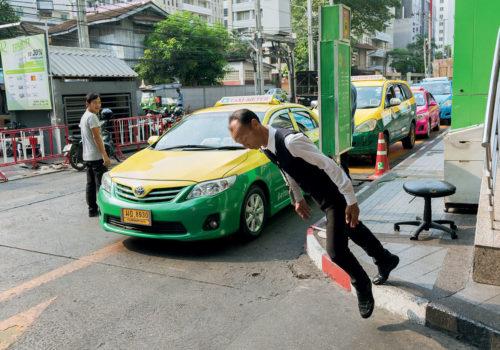The editors of this new book about street photography characterize the practitioners of their subject matter in hipster idioms – ‘the slicers and dicers of the flow of reality, recidivist shoot-and-scram merchants’ – picturing them as foot-loose voyeurs who get their kicks from capturing the uncanny, the incongruous, the sorrowful and the surreal. Defining the territory in such catchy and catholic terms gives them carte blanche for their selection of photographers from around the world. It is a strength of Reclaim the Street but also a weakness.
The photobook’s global dimension is admirable, featuring photographers whose work is more likely to be found on social media sites than in print form. Working in diverse places, from Bangladesh to Brazil, their combined output is prodigious – Instagram showcases talent but short attention spans of its followers encourage quantity more than quality — and this is reflected in the five hundred images that are spread across three hundred and twenty pages of Reclaim the Street. In addition to the book’s undeniable visual impact, the more than forty photographers featured in the book speak in their own words about their methods and motivations.
However, the editors’ minimalist deployment of a sense of history allows for too many photographs to be included that are only of passing interest. A nod is given to tradition in a subsection with the heading ‘Art?’ and the use of a lower case ‘s’ when Cartier-Bresson is mentioned — ‘the legacy of surrealism remains a key motivator in much modern street photography’ – allows the cultural movement that was Surrealism to be co-opted for highlighting photographs that merely happen to capture something contingent, quirky or mildly humorous. This can become tiresome but a directory of the photographers’ websites at the back of the book allows readers to check out for themselves the range of their work. Some of Tavepong Pratoomwong’s photographs, for instance, may be superficial but his mastery of colour and talent for composing memorable images is more than just congenial.
The traditional domain of street photography was cities like London, Paris and New York and, besides the whole digital revolution, a reason for the eclipse of their importance in this regard is the paradigm shift taking place in the personality of public spaces. The street in these cities as the public zone it once was is disappearing, becoming instead a space framed by market exchange, a privatised space in more than the neoliberal, economic sense. Óscar Monzon and Stuart Paton are alert to this when they take to the street with their cameras; Paton describes Milan’s city’s street code as ‘pretty ugly … body language screams that you just don’t exist.’ In London especially, public spaces risk becoming essentially private environs where a photographer who is not pointing a camera at themselves can be regarded as proxy for the constant CCTV surveillance. Melissa O’Shaughnessy, Andre D. Wagner and David Rothenberg, sallying out on the streets of New York, are not deterred. O’Shaughnessy is following in the footsteps of mostly male photographers but, unlike her exceptional predecessor Diane Arbus, avoids the uncomfortable and has more in common with the work of Elliott Erwitt. Manhattan is Rothenberg and O’Shaughnessy’s territory but a very different neighbourhood, Bushwick in Brooklyn, is where Andre D. Wagner lives, photographing it relentlessly ‘to make honest and relatable work that speaks to the trials and triumphs of the everyday person’.
Reclaim the Street’s achievement, responding to the way street photography’s geographic axis has tilted away from Europe and the US, is at its best when drawing attention to photographers who are relatively unknown, like Irina Sokolova in St Petersburg and Nayeem Siddique from Chittagong. Siddique responds to street life in his country because, as he says, ‘people are so friendly and curious that they will always look at your camera’. This does not prevent him from responding to a scene near a cattle market – two cattle in the back of a truck being taken to slaughter – when the sky turns a warning red behind the vehicle.
The striking images in this compendium are serious ones like those of Éléonore Simon who, conscious of the way Valparaíso also fascinated Sergio Larraín, finds the city in Chile a rich resource for her play with shadows and a self-professed intention to create ‘a calm and serene view created out of our chaotic and overcrowded urban environments.’ The book’s lacuna, nevertheless, is a downplaying of street photography emerging from engaged and critical positions in favour of an upbeat, feel-good approach. While the title happily borrows the name of the Reclaim the Streets collective – which opposes the way corporate forces are usurping community ownership of public spaces – the contents give a low profile to documentary or leftist-enlightened photography of social and political events unfolding on streets around the world.
Sean Sheehan
Reclaim the Street, eds. Stephen McLaren and Matt Stuart
















